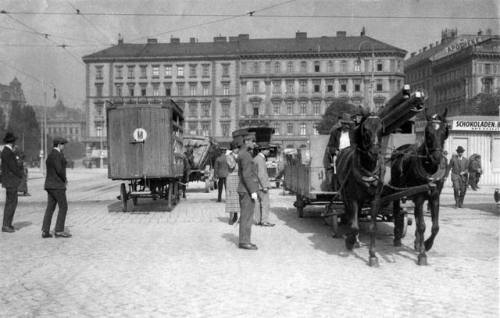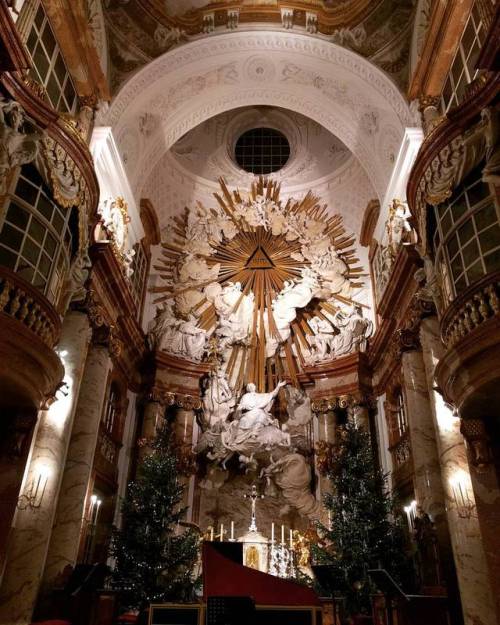#karlsplatz
Eine Reise zurück ins Jahr 1920. Man befindet sich mitten im Alltagsgeschehen auf der Kreuzung am Karlsplatz, Ecke Kärntner Straße. Im Bildhintergrund sehen wir die Friedrichstraße und Hausnummer 8 bis 10 (Privatsammlung Werner Neuwirth / vintage-fotos.at)
Post link

(Image Description: Prompt 13 of 25 Days of Draco and Harry: Close up of frozen ice and snowflake crystals.)

(Image: The Adventmarkt am Karlsplatz in Vienna, Austria. The church stands magnificently in the background, in the foreground there is a hay pen and fairy lights strung across the market–for a more detailed description of the church continue reading the story!)
Drarry Christmas Fluff!
***********
Excerpt:
“And now, Harry, dear…” Draco kissed Harry on the cheek. “I have another surprise for you.” They were walking up towards Karlskirche , or “Charles’ Church” as Draco had translated for Harry. It was one of the most astounding baroque churches in Vienna, dedicated to Saint Charles Borromero, according to Harry’s stunningly gorgeous tour guide. Draco had taken him on a tour of the outside of the church after they’d done some Christmas shopping at the Standerln.
*
“You know, this church is considered architect J.B. Fischer’s greatest work,” Draco had explained, “And it’s not too difficult to comprehend why. As you can see—” Draco looked up at the building in awe as he held both arms open, presenting the church to Harry, who bit his lip attempting not to laugh at his lover who was taking his tour very seriously.
“Now, Harry, are you paying attention? Look. Do you see the façade in the center, which leads to the porch?”
Harry nodded.
“It mimics Greek temple porticos.”
“Ah…” Harry had remembered those from their trip to Greece, summer of last year. Ever since the beginning of their relationship, Draco had whisked Harry to different holiday destinations—evidently for the sole purpose of admiring the architecture. Draco could be such an insufferable architecture snob when he wanted to be, and Harry loved him dearly for it.
“And those neighboring columns—” Draco pointed out the columns on either side of the portico. “Their sculptures display scenes from the life of Charles Borromeo in a spiral relief. Charles, as in, Karl , the patron saint this church was built to commemorate who was revered as a healer for plague sufferers.”
“Oh, wow.” Harry had been standing a good two meters from the left column and he bent back to admire the magnificent piece of architecture from the bottom up.
“Mmm, yes, I see the sculptures you were talking about. It’s beautiful.”
Draco nodded. “However, the columns were not crafted by J.B. Fischer himself.”
“Oh, no?” Harry couldn’t believe that after two years, Draco had finally got him hooked on this stuff too.
“Nope. That was Lorenzo Mattielli, who was inspired by Trajan’s column in Rome.”
Harry’s eyes widened, as it finally dawned on him. “You’ve been planning this. Ever since we got together. It’s true! Don’t even try to hide it anymore!”
Draco laughed, caught red-handed.
“First, we went to Rome on our first holiday together, then we went to Greece that summer…”
Draco nodded, the grin breaking out across his face. “And you know why, don’t you?”
“I would have never understood the epicness of this magnificent piece of architecture if you hadn’t have taken me to those places first.”
Harry finally returned Draco’s grin and he felt tears form behind his eyes.
“This is the most well-thought out and meaningful gift anyone could have ever given me, Draco. Thank you so much.”
**
Read full story:
https://archiveofourown.org/works/27827017/chapters/68726799
TheVienna City History Museum (Wien Museum) is going to be undergoing some pretty momentous changes in the coming years, and the museum held an event last night to inform interested members of the public of the current status of the developments and offer some tantalising snippets about the direction the museum will take.
Some brief background, although the museum as an entity is 130 years old, the current building and location is a product of the 1950s, a mere 11 years after the end of WWII, the museum opened in the so-called “Haerdtl” building, a modern and innovative building that set the tone for Vienna’s post-war city planning. However, the intervening years has seen the collection and the role of the museum transform and grow, and the current museum is busting at the seams, with revenue-driving temporary exhibitions spread over several floors and a somewhat disjointed feel. The building is also no longer able to completely meet the needs of a modern museum – both technologically, but also in terms of accessibility.
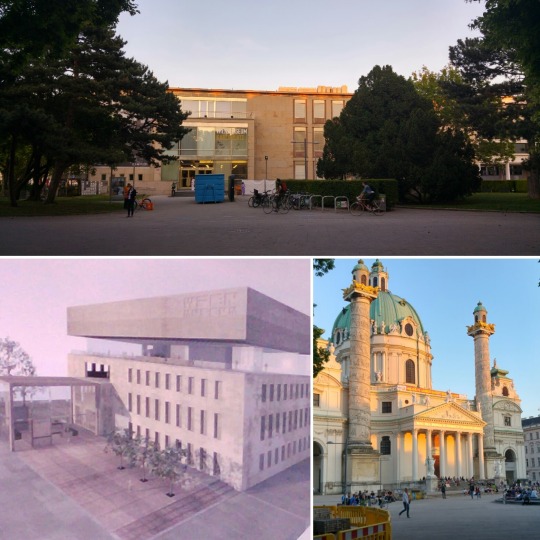
The current Wien Museum (top), the plans for redevelopment (bottom left, Certov, Winkler & Ruck) and the strong competition that is the the Karlskirche next door.
The redevelopment of the museum has not been without controversy – indeed, previous events have been heated and not without the occasional conspiracy theory. This was avoided last night by hiring a friendly but determined moderator to ensure the discussion stayed on track, clearly defining the topics of the evenings discussion. The architectsCertov,Winkler & Ruck from Graz won the global competition, beating over 270 other submissions.Their vision sees the adding of two extra floors to the museum, one offering more room for events, classrooms and ateliers, a lounge area, extra office space and a terrace with views of the city and a second dedicated solely to temporary exhibitions. This top floor will be flexible, it’s possible use ranging from one large exhibition space, to five smaller exhibitions spaces and all manner of possible configurations in between.
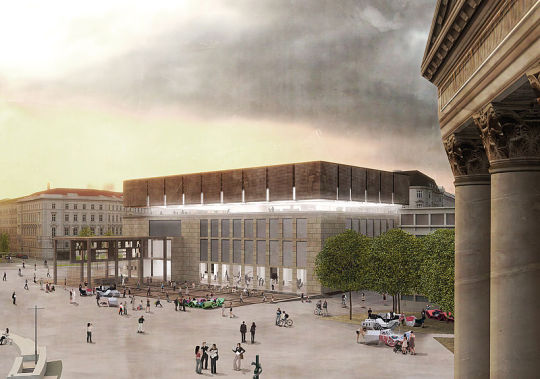
The redevelopment will only ony add more exhibition space and events/educational facilities, but it will also reestablish the museum’s position on the square with a piazza where visitors and non-visitors alike can meet and relax. Picture: Wien Museum
The current museum was built at a time when the square in front of the museum was not a park as it is today, but a busy traffic intersection. Changes to the use and layout of Karlsplatz (named for the bombastic looking Karlskirche ‘Charles Church’) have left the museum somewhat sidelined and easily overlooked, pushed into a corner of the park and quite well-hidden behind trees and play parks. Not only will the new elements take into account the protected status of the original building by adding new floors in a complicated and exciting sounding way, but a new entrance area will shield the new “piazza” area for cafes and events in the front of the museum from the traffic of the nearby road and offer a kind of intermediate zone between the museum and the wider world. The new design will reintroduce the museum on the square, both in terms of presence and use of space.

The current Wien Museum and it’s immediate surroundings on Karlsplatz. Picture: Google Maps.
The New Permanent Exhibition
The museum’s director, Matti Bunzl (see also “A Breakfast with Matti Bunzl, The Vienna City Museum’s Director-in-waiting”), was also on hand to offer some insight into what form the new permanent exhibition might take. The most significant changes will be to the size and scope of the exhibition, increasing from 2000m2 to 3000m2 and bringing the story bang up to date by including a much more substantial look at the 20th century (the exhibition currently stops prior to WWI) and into the 21st century. The changes to the building will make the route through the exhibition more fluid than it currently is, offering visitors a chronological take on Vienna’s history as they ‘corkscrew’ up through the building.
The ground floor will begin with the archaeology of Vienna, leading through to the medieval period (the Wien Museum has several smaller museums throughout Vienna, including the Museum of the Middle Ages in the Stephansplatz tube station – review here) and potentially including a giant model of St Stephens Cathedral, the most famous building in Vienna. The next floor will also feature an outrageously sized object: the original Donnerbrunnen, a monumental fountain commissioned as the first public artwork by the City of Vienna in the 18th century. The fountain is so big that in all likelihood the museum will have to be somehow ‘built around it’, as even the new heavy-duty lift wouldn’t be able to transport it. Vienna’s story continues, including the boom period of the Gründerzeit, which saw Vienna as the capital of vast, multi-ethnic empire, but also the growing gaps between rich and poor, extensive migration from other areas of the empire and rapid technological advancements that made Vienna a vibrant, global metropolis.

The Donnerbrunnen today in Vienna’s first district. The original will be part of the Wien Museum’s new permanent exhibition. Photo: Wikimedia Commons
The third floor will continue the story through the changes, devastations and upheavals of the 20th century: the establishment of two Austrian Republics, the World Wars, Red Vienna, the Holocaust and Nazi Regime, the Cold War, Vienna and the UN, migration post-1960s and showcasing the museum’s art collection (it’s Vienna, so think Klimt and Schiele!)
What Comes Next?
To be able to realise such a wholescale redevelopment the museum will have to close for a period. Matti Bunzl also detailed some of the plans they have to continue the museum’s mission and to ensure that their key audiences remain in touch with the museums and engaged. One very exciting project was the school programme, which will see curators and educators spending a prolonged period in primary schools with the 3rd class (roughly nine years old), focusing not only on Vienna’s history, but also the work of a museum. Over a week, objects and information will be worked up into an exhibition that will then be opened at the end of the week. I would have just exploded with excitement if someone had come to my school to do this when I was nine.
Another programme is to have satellite, mobile exhibitions in slightly more unexpected places around the city.
The Wien Museum Neu project is now entering the public consultation phases and extensive exploratory drilling will be carried out in the coming weeks to head off any nasty surprises when the time comes to build.
You can read more about the project on the website:
Wien Museum Neu (only in German it seems, but lot’s of pictures)
The Wien Museum also had an exhibition that featured not only the winning design, but also the runners-up and special mentions.
Is it floorplansyou’re after?
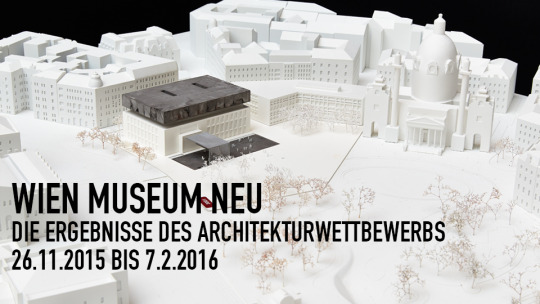
Post link

